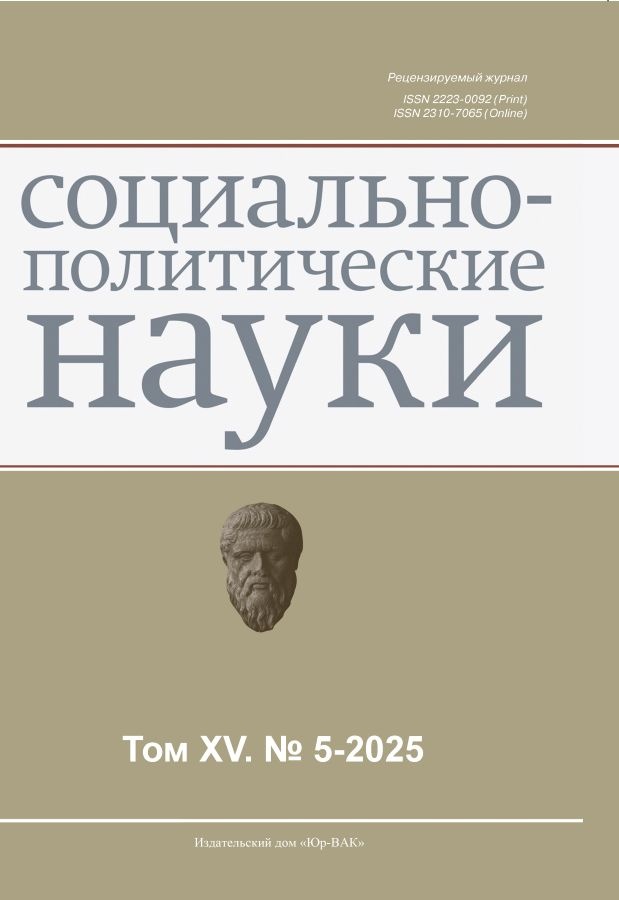Direct Marketing Tools in Public Policy and Public Administration
- Authors: Nasyrova E.V.1
-
Affiliations:
- Russian State University for the Humanities
- Issue: Vol 15, No 5 (2025)
- Pages: 63-75
- Section: Political Institutions, Processes and Technologies
- URL: https://journals.eco-vector.com/2223-0092/article/view/696685
- DOI: https://doi.org/10.33693/2223-0092-2025-15-5-63-75
- EDN: https://elibrary.ru/CDMSQS
- ID: 696685
Cite item
Abstract
The article is devoted to the study of the application of direct marketing tools in the field of public policy and public administration. Based on a review of contemporary literature and practical cases, it is shown that the growing tolerance of audiences toward traditional PR communications makes it relevant to turn to personalized, targeted forms of communication with citizens. The theoretical part reveals the concept of political direct marketing and the specific features of its tools (postal and e-mail newsletters, personalized appeals, targeted advertising, etc.) in comparison with commercial marketing. The empirical analysis includes case studies: Cambridge Analytica as an example of microtargeting in election campaigns and the Moscow platform Active Citizen as a successful tool of direct citizen engagement in governance. The significance of personalized communications and targeting for improving the effectiveness of interaction between government and society (increasing legitimacy, targeted services, voter mobilization) is substantiated. At the same time, the risks of these technologies are identified – from ethical and legal (privacy threats, manipulation of voter behavior) to socio-political (non-transparency of decisions, digital inequality). In conclusion, the article summarizes the prospects for integrating direct marketing into the toolkit of public administration and the need for regulatory measures to minimize potential risks.
Full Text
About the authors
Elena V. Nasyrova
Russian State University for the Humanities
Author for correspondence.
Email: nasyrova.ev@rggu.ru
ORCID iD: 0009-0007-6788-6693
SPIN-code: 2286-5490
Cand. Sci. (Polit.), associate professor, Department of Integrated Communications and Advertising
Russian Federation, MoscowReferences
- Bankin I. Content marketing for sales growth. St. Petersburg: Piter, 2017. 280 p.
- Volkova V.V., Efanov A.A., Nasyrova E.V., Gertsev N.E. Theory and practice of media communications. Moscow: RSUH Publishing, 2024. 382 p.
- Golubkova E.N. Integrated marketing communications: Textbook and practical guide for academic bachelor’s degree. Moscow: Yurayt, 2017.
- Gvozdeva V.S. Political marketing as a tool for shaping the image of a region. In: Modern trends in economics and management: A new look. Collection of materials of the IX International Scientific and Practical Conference. S.S. Chernov (ed.). Novosibirsk: NSTU Publishing House, 2011. Pp. 69–74.
- Erokhina O.V. Digital forms of political participation in Russia (the case of the “Active Citizen” Platform). Power. 2021. No. 6. Pp. 49–54. (In Rus.)
- Kennedy D. Hard direct marketing: Make the buyer take out their wallet. Moscow: Alpina Publisher, 2014. 198 p.
- Marketing: Models, technologies, tools. G.L. Azoev (ed.). St. Petersburg: Piter, 2024. 544 p.
- Nasyrova E.V. Integrated communications of state institutions. Moscow: Scientific Consultant Publishing House, 2025. 294 p.
- Novozhilova I. SMM. Effective promotion in social networks. St Petersburg: BHV-Petersburg, 2022. 447 p.
- Chumikov A.N., Bocharov M.P. Government PR. Public relations for government organizations and projects. Moscow: INFRA-M, 2024. 343 p.
- Kennedy D. The ultimate sales letter: Attract new customers, boost your sales. 4th ed. Adams Media, 2014.
- Pieterson W., Ebbers W., Dijk J. van. Personalization in the public sector: An inventory of organizational and user obstacles towards personalization of electronic services in the public sector. Government Information Quarterly. 2007.Vol. 24. Issue 1.
Supplementary files









